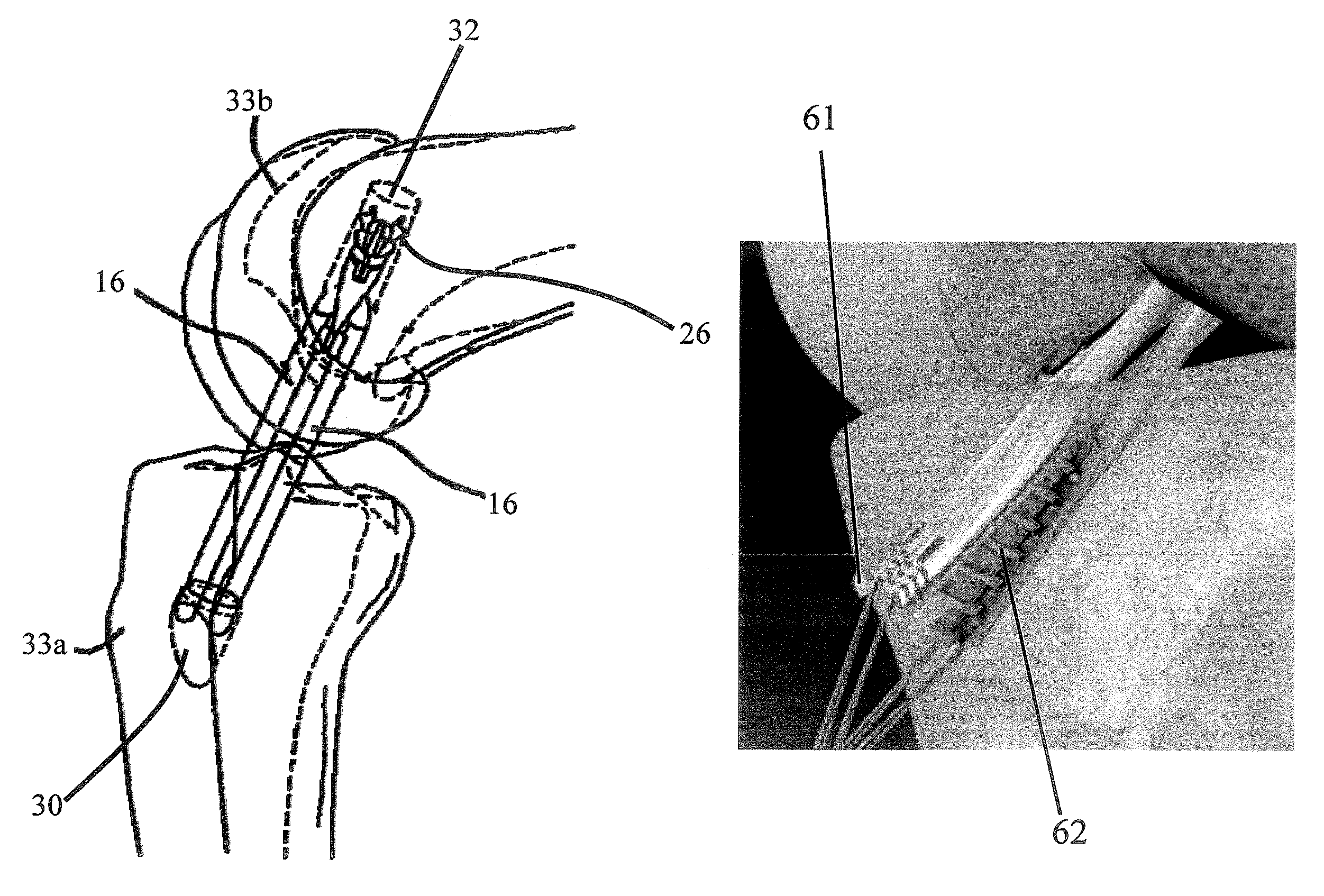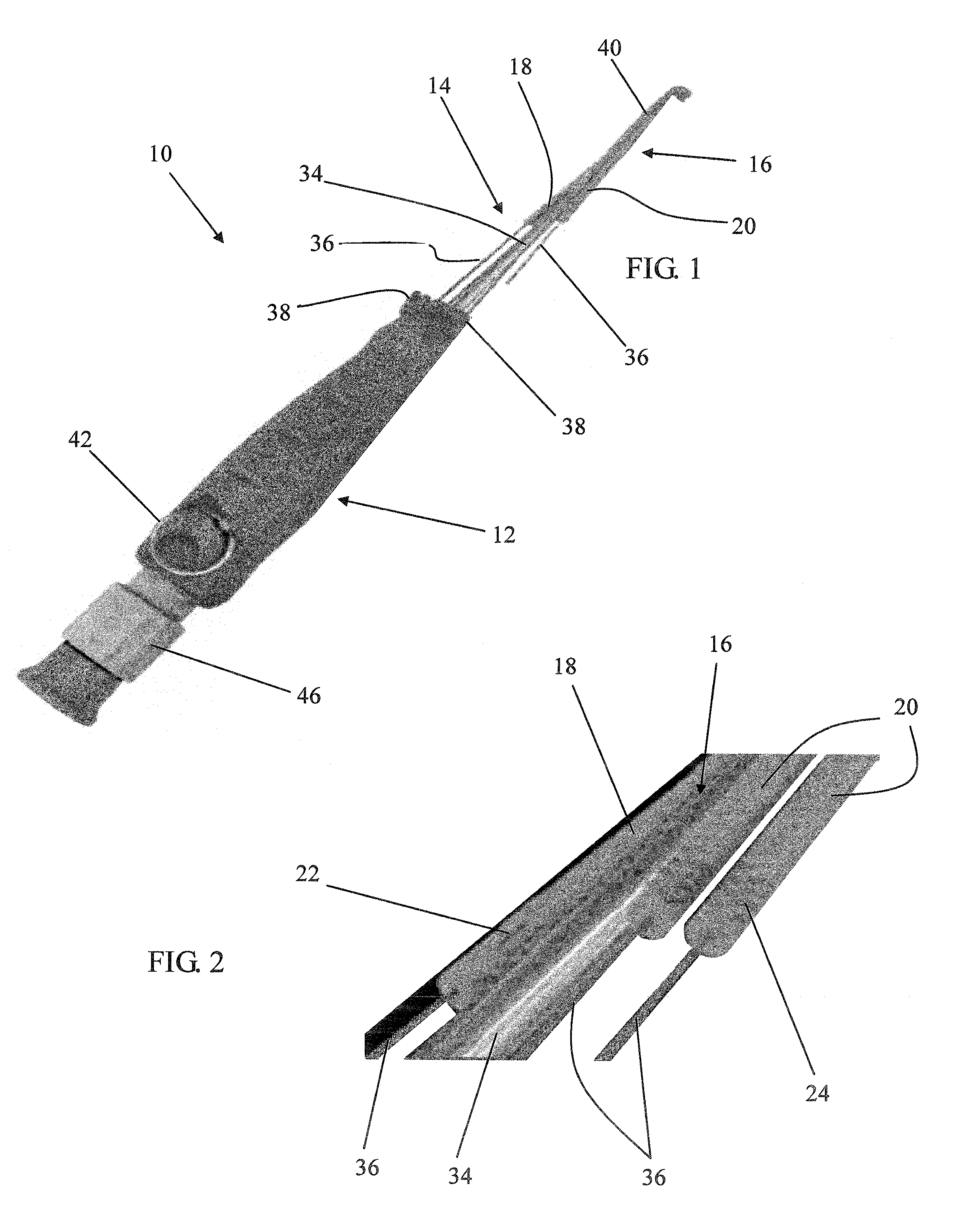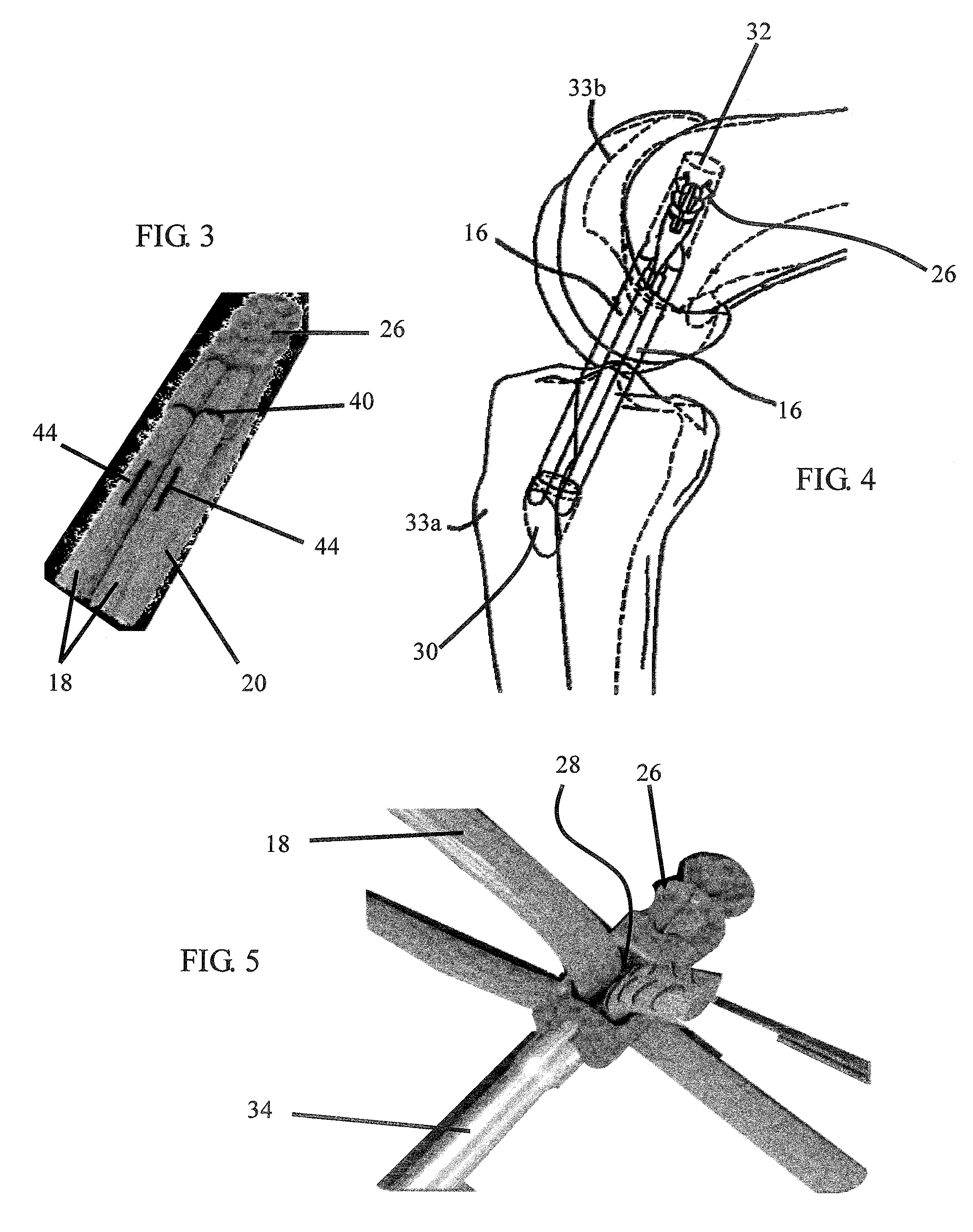Method for surgically repairing a damaged ligament
a technology for ligaments and surgical repair, applied in ligaments, prostheses, medical science, etc., can solve the problems of compromising revision surgery, increasing complexity, and unable to restore normal rotational knee kinematics, so as to minimize the widening of the tunnel, reduce the difficulty of surgery, and improve the effect of anatomic reconstruction
- Summary
- Abstract
- Description
- Claims
- Application Information
AI Technical Summary
Benefits of technology
Problems solved by technology
Method used
Image
Examples
Embodiment Construction
[0035]The present inventive technique is indicated for primary and revision reconstruction of ACL deficient patients. The procedure should be considered for any patient with a pronounced pivot shift, and therefore, rotational instability. The inventive ACL reconstruction techniques afford surgeons a strong fixation option for soft tissue grafts, with circumferential graft compression at the aperture, high pull-out strength, and ease of use. The graft bundles are positioned in a more anatomic orientation through a single femoral and tibial tunnel.
[0036]Arthroscopy and Preparation
[0037]In accordance with the inventive techniques, the patient is positioned supine on the operating table in the ACL position preferred by the surgeon. A diagnostic arthroscopy is performed and concomitant pathology is addressed. Diagnosis of ACL rupture is confirmed and the ACL remnant is derided. The center of the both the tibial and femoral footprints of the ACL are identified and marked with a thermal de...
PUM
 Login to View More
Login to View More Abstract
Description
Claims
Application Information
 Login to View More
Login to View More - R&D
- Intellectual Property
- Life Sciences
- Materials
- Tech Scout
- Unparalleled Data Quality
- Higher Quality Content
- 60% Fewer Hallucinations
Browse by: Latest US Patents, China's latest patents, Technical Efficacy Thesaurus, Application Domain, Technology Topic, Popular Technical Reports.
© 2025 PatSnap. All rights reserved.Legal|Privacy policy|Modern Slavery Act Transparency Statement|Sitemap|About US| Contact US: help@patsnap.com



